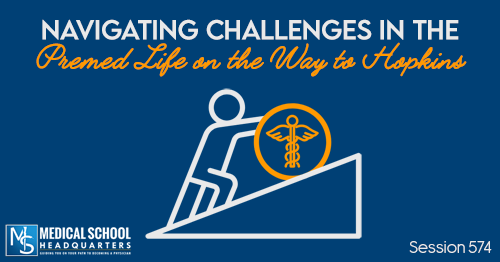The following is a guest post by Liza Thompson, experienced premed advisor, former director of Johns Hopkins and Goucher Postbac Programs, and medical school admissions consultant at Thompson Advising.
Preparing for a Career in Medicine: Clinical Experience
Medical experience is enormously valuable to premedical students. Observing physicians and understanding what they do on a daily basis helps premeds understand the challenges and rewards of the medical profession and envision themselves as physicians.
Spending time with doctors also helps premed students clarify and solidify their goals, confirming with certainty that they want to pursue a career in medicine. Observing or volunteering also helps premeds understand the ways in which hospitals or clinics function and the teamwork involved in providing good medical care.
Sustained clinical experience proves to both yourself and the medical schools that you have a good understanding of the medical profession and are committed to it. Clinical work also serves as inspiration. It can help you power through the challenges of your premedical courses, reminding you of your ultimate goal.
Shadowing vs. Volunteering: What’s the Difference?
Shadowing Physicians as a Premed
There are several ways premed students can gain clinical experience. Some common ways are volunteering in a clinic or hospital or by “shadowing” a doctor. Shadowing entails spending time with a physician, observing her work. Shadowing can be helpful in that it allows premeds to see what physicians do on a day-to-day basis.
The value of the shadowing experience depends on its time commitment and resulting depth, along with the physician/s with whom you are paired. A shadowing experience of one day has limitations; it doesn’t allow you to see or learn that much and requires minimal commitment on your part.
The value of shadowing depends largely on the time commitment involved. The more experience you have, the better. A shadowing experience of at least six months shows that you have made a time commitment and are eager to learn about the medical profession in some depth.
The richness of the experience can also depend on the physician with whom you are paired, and whether she explains the patient care she is providing and is eager to mentor you. If you decide to shadow a physician, set a time commitment for yourself of at least six months. Setting a time commitment will maximize the experience while also proving to medical schools in your future application that you dedicated yourself to learning about the medical profession.
Volunteering as a Premed
While many premeds seek out shadowing experiences, and this can be beneficial, volunteering often requires a specified time commitment and can thus be perceived by medical schools as more useful and instructive than shadowing.
Volunteering is usually a more formalized arrangement than shadowing. Volunteers normally set up the experience through a volunteering office at a hospital or clinic, which requires participants to fill out paperwork and go through a specific process to get started. Shadowing tends to be less formalized.
Hospitals and clinics usually require volunteers to commit to a specific time commitment of several months, and sometimes longer. As such, it requires dedication from participants, who, over time, may be able to take on an active role.
Volunteers are usually assigned to a specific area of the hospital, enabling them to engage in in-depth learning and to observe healthcare teams in action. Moreover, volunteers tend to be exposed to the varied rhythms of a hospital or clinic over a long period of time, allowing them to understand the complexity of medicine. Those who shadow can reap the same rewards as long as their time commitment is on par.
Volunteers can learn from the various healthcare workers with whom they come into contact by asking questions and seeing how they function as part of a team. Good patient care involves teams of healthcare workers; seeing how a good team functions to provide outstanding patient care is essential for premeds to learn, whether by volunteering or shadowing.
[Related episode: Can’t Find Volunteering That Works with Working Full-Time!]
Longer Time Commitment = Learning and Contributing
A long time commitment translates into greater learning and the possibility of contributing meaningfully to the environment, whether you volunteer or shadow.
Let’s say, for example, that you decide to volunteer as part of the Child Life team in a pediatric hospital. Spending an afternoon per week with the team over the course of an entire year would enable you to spend time with patients and their parents. This can give you a greater understanding of the impact of disease on a family and its dynamics.
This longterm experience would also allow you to observe a pediatric hospital setting and learn about the way it functions, and to interact with physicians, nurses, social workers, and occupational therapists. The healthcare team, in turn, would get to know you and gain trust in your capabilities, perhaps allowing you to increase your responsibilities and contributing in some way to the patients’ wellbeing or the functioning of the team.
[Related episode: The Struggle with Consistency in Shadowing and Volunteering.]
Having an Impact with Clinical Volunteering
Another example would be volunteering or shadowing in a small health clinic for patients with no health insurance. In this setting, you would learn about the challenges facing underserved patients and primary health care providers. The small setting would also enable you to learn about and observe the patient-doctor relationship and the dynamics of a small clinic setting. You might even get to make a difference.
A former student volunteered in a small clinic like this in Baltimore; after observing the out-of-date medical records system, he suggested ways for the clinic to convert to electronic medical records. Using his background in information technology, he was able to leverage his knowledge to good use for the clinic. He transformed their medical records system. So he was able to make a real contribution to the clinic, all while learning about patient care.
Finding Physician Mentors Through Volunteering or Shadowing
Mentoring in medicine is incredibly valuable and important. Volunteering or shadowing allows you to seek out mentors and to find role models who can guide your choices in medicine.
Working alongside physicians and allowing them to see your dedication over a long stretch of time prompts meaningful discussions about some of the challenges of the profession along with your career goals. Physicians are often eager to provide guidance and help those who seek them out. They find meaning in paying it forward to the next generation of doctors.
Letters of Recommendation: Important But Not the Sole Reason
You may be able to get letters of recommendation from those for whom you volunteer. But that should not be the sole reason you seek out a volunteer or shadowing opportunity in a medical setting. The primary reason to volunteer is to learn about the medical profession, to see if you’re suited to it, and—hopefully—to have the opportunity to contribute.
A secondary result might be that you get to know a physician as a result of your volunteer commitment. That physician will learn about your capabilities and feel comfortable attesting to your strengths in a letter. This letter will vouch for your commitment to medicine and perhaps describe your personal characteristics and qualities, as well.
[Related episode: How to Get Letters of Recommendation as a Nontrad.]
How to Get Volunteer or Shadowing Experience: Where to Begin
Most premed advisors at undergraduate institutions will connect their premed students with clinical opportunities in the region. Many advisors maintain lists of volunteer sites. They will be able to provide you with information about the hospitals and clinics in the region.
If you’re not enrolled in school—let’s say you’re a prospective postbac student, for example—and want to get a taste of the medical profession, start with your local hospitals or clinics. Most of these sites have volunteer offices which provide information to prospective volunteers about the requirements and various opportunities available. Start there and follow your interests.
[Related episode: Don’t Wait Until the Last Minute to Find Volunteering.]
How to Get the Most Out of Clinical Volunteering or Shadowing
- Approach clinical volunteering or shadowing with an open mind and don’t expect too much. Remember that your medical skills are limited; don’t expect to do more than you’re able to.
- If you shadow, make a solid time commitment to maximize your learning and show your dedication.
- Respect patient confidentiality and obey privacy laws.
- Keep a journal of your experiences. This will help you process some of the emotions you may encounter upon seeing illness (and perhaps death). It will also help when you write your personal statement for medical school.
- Be a helper. You’ll sometimes be called upon to do menial tasks. Do them with enthusiasm and remember that these tasks help the entire team function better. This, in turn, translates into better care for patients.
- Use your power of observation to try to understand the ways health care teams function and to figure out how you can best contribute.
- Ask questions when appropriate but be sensitive to the situation.
- Read about what you observe. Maximize your learning by doing outside reading to complement what you’ve witnessed.
- Enjoy and learn from the experience.
Related Questions
How do you get clinical experience for medical school? The best option may be entry-level jobs providing patient care, such as EMT, CNA, MA, or phlebotomist. Another good option is volunteering in a hospital or clinic. But you must be interacting with patients (not just stocking shelves).
Does shadowing count as clinical experience? Not exactly. The purpose of clinical experience is to interact with patients and make sure you like working with sick people. Shadowing is more passive—you’re just observing. So shadowing does not replace clinical experience.
How many hours of shadowing do you need for medical school? There’s no exact number of shadowing hours needed. As a guideline, try to get 40-50 hours or more. But just show consistent interest in medicine over time and do enough to know you want to be a doctor.
Links and Other Resources
- Check out my Premed Playbook series of books (available on Amazon), with installments on the personal statement, the medical school interview, and the MCAT.
- Related episode: How Should I Prepare for My First Shadowing Experience?
- Related episode: What If I Don’t Have Time for Volunteering?
- Need MCAT Prep? Save on tutoring, classes, and full-length practice tests by using promo code “MSHQ” at Blueprint MCAT (formerly Next Step Test Prep)!







